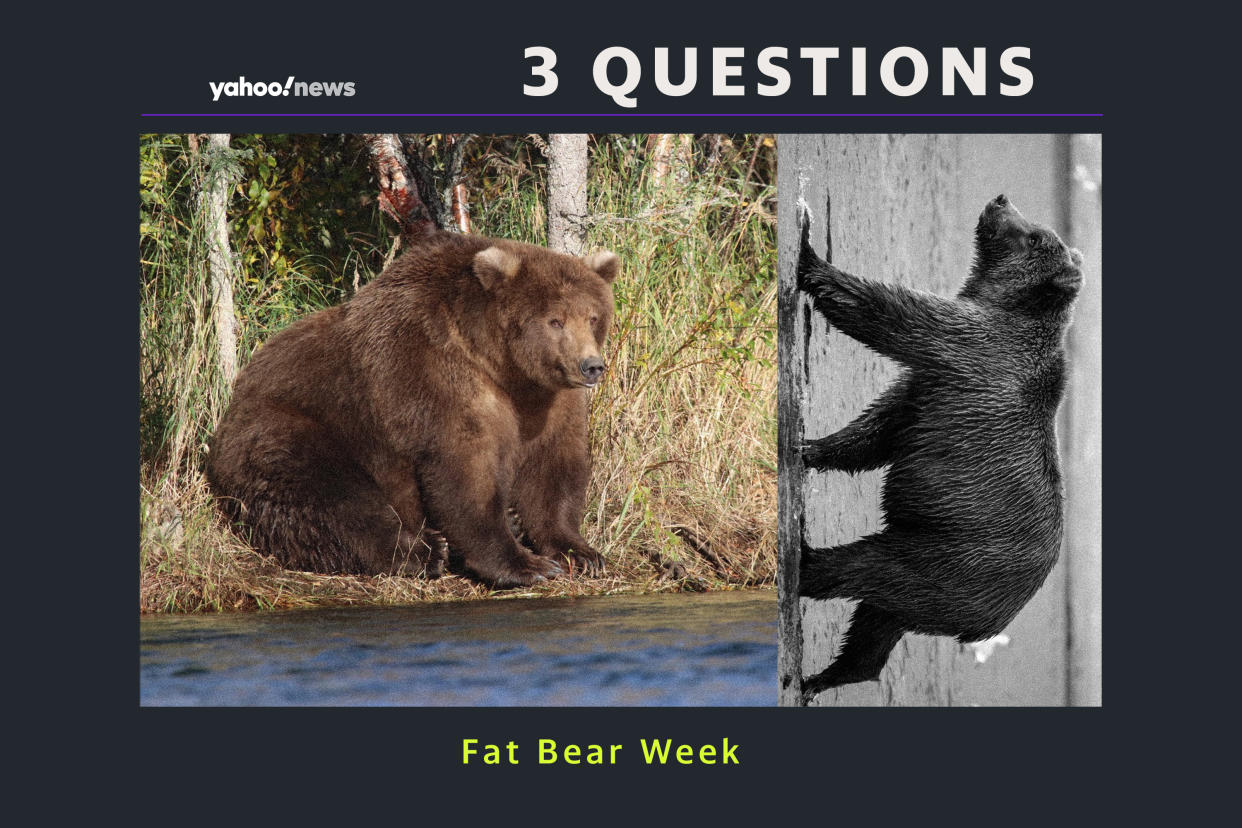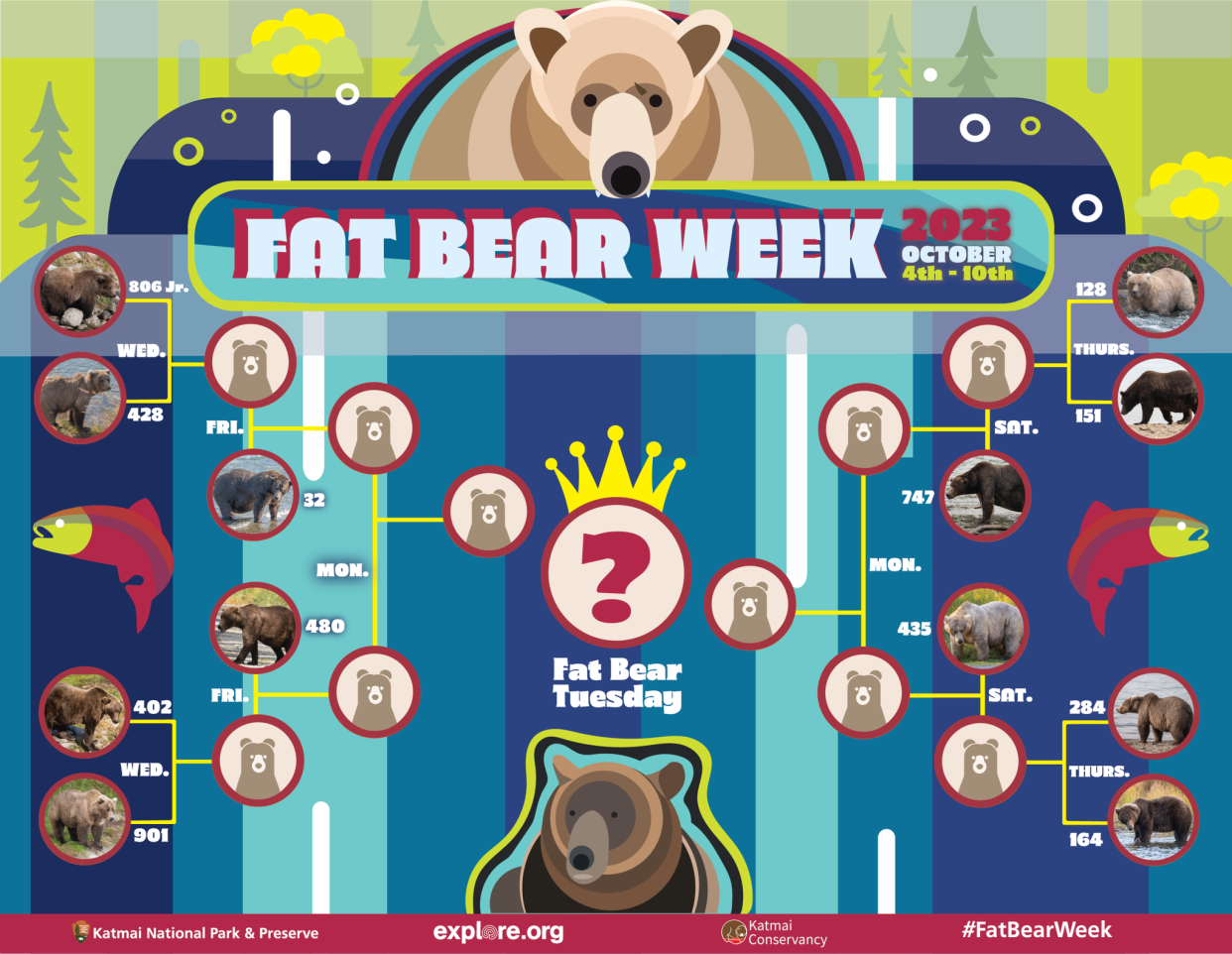3 questions for the National Park Service on the return of Fat Bear Week

Fall is officially here, which means autumn enthusiasts can cozy up and enjoy all things pumpkin spice, sweater weather, Sunday night football — and Fat Bear Week!
For those unfamiliar with the annual tradition, Katmai National Park and Preserve in Alaska is home to some of the largest brown bears on Earth. Fat Bear Week is a celebration to raise awareness of the success and survival of the brown bears of Katmai that have packed on the pounds feasting on sockeye salmon at Brooks River in preparation for winter hibernation, when they rely solely on their fat reserves and won’t eat or drink until they emerge in spring.
The tradition, which has grown significantly in popularity since 2014, involves fans voting for their favorite furry big lugs of Katmai, which are selected by park rangers to go head-to-head, figuratively, in a battle of the pudge to see who is the fattest of them all. Read more about this year’s 12 contenders.

Fat bear fans can start voting today in an NCAA March Madness-style bracket for their favorite chonky bruins at www.fatbearweek.org. Voting concludes on Fat Bear Tuesday, October 10, when the winner will bear the supreme title.
To get at the heart of Fat Bear Week and its significance, Yahoo News asked Cynthia Hernandez, spokesperson for the National Park Service, three questions. (Some answers have been slightly edited for length and clarity.)
1. Why is Fat Bear Week important?
Fat Bear Week is a weeklong celebration of the resilience, adaptability and overall strength of the brown bears at Katmai National Park and Preserve. The bears are benefiting from some of the strongest salmon runs on the planet, clean water and thriving flora and fauna within the park that’s protected by the National Park Service. It’s an amazing opportunity for the public to appreciate how fat these bears can get but also to learn about the richness of that ecosystem that is home to more brown bears than people, and the largest, healthiest runs of sockeye salmon left on the planet.
Fat Bear Week began in 2014 as just Fat Bear Tuesday — one day when all participants could cast their vote for their favorite fat bear. And nine years later, it has continued to grow and grow and grow. Last year over a million votes were cast, and we’re looking forward to reaching more and more people and helping them, one, appreciate the incredible fatness of the bears, but also learn about the amazing ecosystem.
2. How are the bears selected for the competition, and what should voters consider?
We have to have a "before" and an "after" photo of the bears. So if they made their way down to Brooks Camp (within Katmai National Park) earlier in the year, but then they didn’t come back for whatever reason, we don’t really know how fat they’ve gotten. So we have to have some sort of visual judgment of how fat they’ve gotten in the last few months, and it’s truly incredible. (You can see before-and-after photos of the bears here.)
Beauty is in the eye of the beholder … so is the fatness. We don’t weigh the bears, so you can look at the before-and-after photos and decide who can you visually tell has gained the most weight? Who looks the fattest right now? It’s not necessarily a scientific vote, but we hope that viewers can just have a little fun and maybe learn a little bit about the bears too.
3. Are there any known impacts of climate change on this ecosystem?
I can say that we don’t yet know exactly how climate change is impacting this specific ecosystem within the park. Many factors would probably affect the salmon run, like warming ocean temperatures, which studies have shown impact the effectiveness of salmon runs in other parts of the world. But we are fortunate to not have seen that direct correlation of climate change here at the park yet.
Again, another reason to celebrate is that the Bristol Bay Salmon Run is the healthiest salmon run of wild salmon left on the planet. It’s critical to the survival of the Brooks bears. We continue to monitor the salmon runs and many other aspects of the park, and it’s important now more than ever for folks to understand about climate change and conservation and the many things that the National Park Service does to protect these landscapes.
